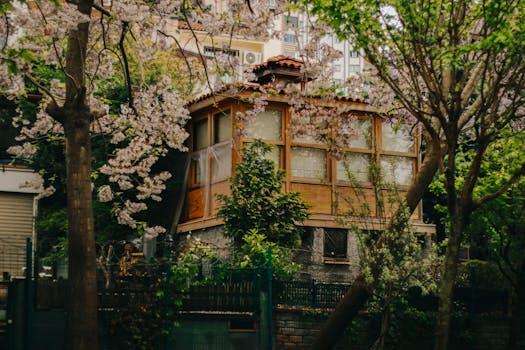
Urban Green Spaces: The Future of Outdoor Living in European Cities by 2025
Urban Green Spaces are becoming increasingly important in European cities, and for good reason. As the world becomes more urbanized, the need for green spaces has never been more pressing. Urban Green Spaces are not just aesthetically pleasing, but they also provide numerous benefits for both the environment and the people living in these cities. In this article, we will explore the future of outdoor living in European cities and how urban green spaces are transforming the way we live, work, and interact with our surroundings.
What are Urban Green Spaces?
Urban green spaces refer to areas in urban environments that are dedicated to vegetation, such as parks, gardens, green roofs, and green walls. These spaces can be public or private and can range in size from small gardens to large parks. The primary purpose of urban green spaces is to provide a natural oasis in the midst of urbanization, where people can relax, recreate, and connect with nature.
The Benefits of Urban Green Spaces
The benefits of urban green spaces are numerous and well-documented. Some of the most significant advantages include:
- Improved Air Quality: Urban green spaces help to purify the air by absorbing pollutants and producing oxygen.
- Reduced Urban Heat Island Effect: Green spaces can help to mitigate the urban heat island effect, which occurs when built-up areas absorb and retain heat, making cities hotter than surrounding rural areas.
- Increased Biodiversity: Urban green spaces provide habitats for a wide range of plant and animal species, helping to maintain biodiversity in urban areas.
- Improved Mental Health: Spending time in nature has been shown to have a positive impact on mental health, reducing stress and anxiety.
- Increased Property Values: Urban green spaces can increase property values by making areas more desirable and attractive to residents and businesses.
The Future of Outdoor Living in European Cities
By 2025, European cities are expected to have undergone significant transformations in terms of urban green spaces. Some of the trends that are expected to shape the future of outdoor living include:
- Increased Investment in Green Infrastructure: Cities are investing heavily in green infrastructure, such as green roofs, green walls, and urban parks, to improve air quality, mitigate the urban heat island effect, and increase biodiversity.
- Integration of Technology and Nature: The integration of technology and nature is becoming increasingly important in urban green spaces. This can include the use of smart irrigation systems, urban forestry management software, and green infrastructure monitoring systems.
- Community-Led Initiatives: Community-led initiatives are on the rise, with residents taking ownership of urban green spaces and working together to maintain and improve them.
- Incorporation of Sustainable Design Principles: Urban green spaces are being designed with sustainability in mind, incorporating principles such as rainwater harvesting, greywater reuse, and energy-efficient lighting.
Case Studies: Urban Green Spaces in European Cities
Several European cities are leading the way in terms of urban green spaces. Some examples include:
- Stockholm, Sweden: Stockholm has invested heavily in green infrastructure, including green roofs, green walls, and urban parks. The city has also implemented a range of initiatives to reduce carbon emissions and improve air quality.
- Copenhagen, Denmark: Copenhagen has implemented a range of sustainable design principles in its urban green spaces, including rainwater harvesting and energy-efficient lighting. The city has also invested in green infrastructure, such as green roofs and green walls.
- Barcelona, Spain: Barcelona has implemented a range of initiatives to improve air quality and reduce the urban heat island effect. The city has invested in green infrastructure, including green roofs, green walls, and urban parks.






